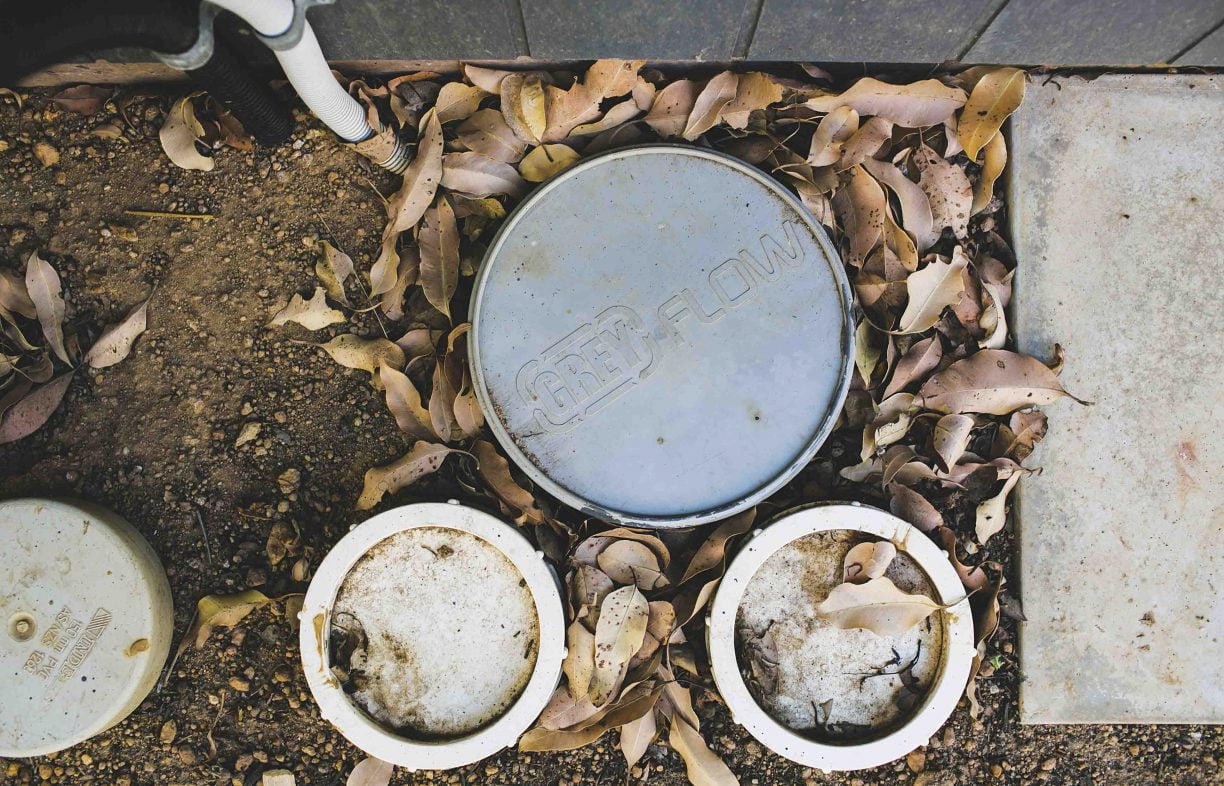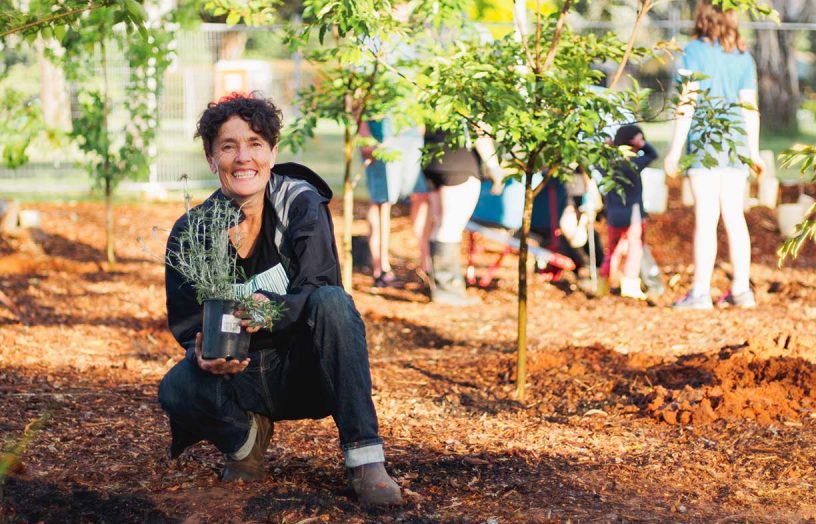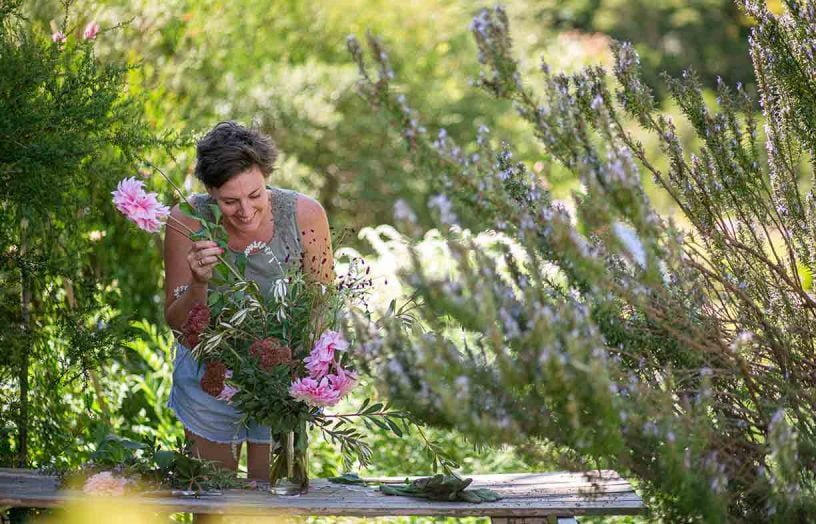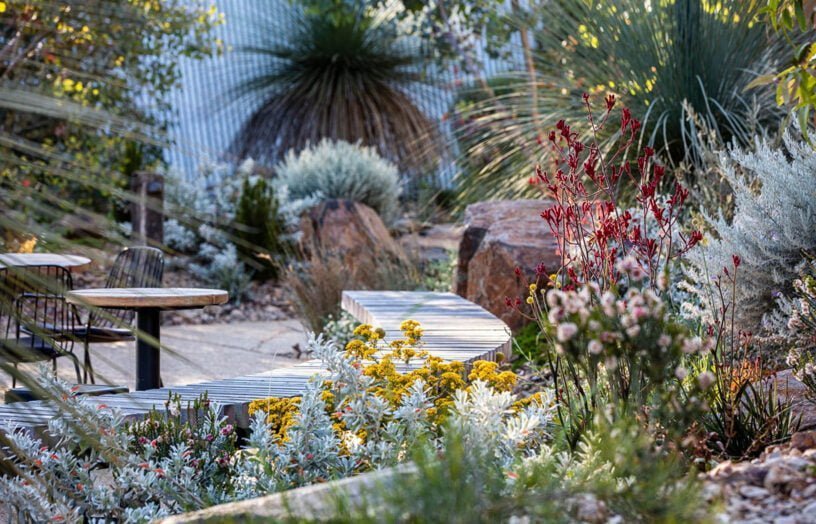A better shade of grey: Grey water in your garden

Potable water is becoming the world’s liquid gold, and in the driest continent on earth, it’s priceless. Horticulturist Michael Tanner outlines how you can help save this precious resource by going grey in the garden.
The hot dry breath of El Niño is once again threatening much of the south, eastern and northern regions of Australia. ‘The Boy’ brings with him the warm ocean temperatures of the Southern Pacific Oscillation, and with it, lower than average rainfall and warmer weather. History tells us this means heat waves and extended threats of bushfire. Meanwhile, the west continues to experience dry conditions, with water storage at moderate levels albeit lower than the previous year.
The sustainable gardener might now be asking herself: “How can I make my garden greener in the face of this looming dry?” The answer might well be: by going grey.
Resilient gardens in Australia often demonstrate efficient and sustainable water use, making the most of this precious resource for the long-term maintenance of new and established plants.
There are a number of options for gardeners wanting to improve the water efficiency of their patch. Perhaps the more obvious choices – the capture and use of rainwater, intelligent irrigation systems and xerophytic or low/no water plantings – have left another option in the shadows. We all know the clear cool water that flows from our taps; this is the life-giving stuff we can drink at kilolitre prices so low they belie its true value. But greywater – water recycled from laundry, bath, shower and basin use – is also a sensible and readily available source of irrigation.
At the other end of the household chain of water use is blackwater, which generally consists of wastewater from the toilet or kitchen sink/dishwasher. Blackwater is considered too contaminated with human waste, kitchen fats, oils and other solids to be safely and reasonably recycled without complex mechanical and bacterial treatments.
Greywater on the other hand is a resource that is too valuable and too prolific to be lost to the sewer. Given our liberal ways with shower, basin and laundry use, the resulting greywater is gold down the drain. Greywater systems let you use your water at least twice.
How can we use greywater in the garden?
From simple buckets in the shower to hoses from the rinse cycle outlet on your washing machine and complex treatment and storage systems there are many ways to access and use greywater. What works for you will be specific to your needs, the volumes available, guidelines in your area and your budget.
There are a few simple steps you might follow to ensure you get the most out of your greywater irrigation. By being aware of some ‘do’s’ and ‘don’ts’ you’ll increase your garden’s drought performance and get the most out of the water sources you do use, avoiding plant damage or loss, soil health problems and risks to human health.
Health and legal matters
- Consult a qualified horticulturist or an irrigation specialist, especially if you intend to use a greywater treatment and/or storage system. Using a licensed plumber may also enable you to take advantage of rebates – check your state/ local government authorities.
- Don’t use greywater on edible plants. The exceptions to this are certain fruit trees, such as apples and pears, olives, stone fruit, grapes and feijoas. Greywater use around soft leafed greens, herbs and root vegetables should be absolutely avoided.
- Don’t store untreated greywater for more than 24 hours. Bacteria levels can build- up to levels that are dangerous to human and animal health.
- Use subsurface drip lines for greywater irrigation as opposed to hoses, sprinklers or sprays. Keeping greywater applications either below soil level or under mulches reduces the risk of human contact, eliminates spray drift and maximises the dispersion of irrigation through the soil profile. Ask your irrigation specialist about the right products and systems suited to your plants, soil type and the quality of greywater you intend to use. Recycled water irrigation is identified by the use of purple lines and fittings.
- Don’t allow greywater to pool or accumulate on surface areas in the garden – this risks algal and bacterial blooms.
- The laws and regulations applying to greywater use vary state by state –contact your local water authorities and agencies to find out which ones apply to you. The ReNew Greywater Buyers Guidealso summarises the regulations around greywater use for each region.
- Greywater systems function best with regular inspections and maintenance.
- Removing solids from filter systems is essential.
- Don’t use greywater from kitchen sinks or heavily soiled laundry.
Looking after your greywatered garden
- Choose laundry and personal cleaning products suited to greywater use. Choose low-salt, phosphate-free, low oil/perfume products, and pay careful attention to the recommended dosage – less is more. It may be best to use only rinse cycle water from your laundry. It is easier to manage the quality of your greywater before use than it is to manage and select new plants and and soils.
- Make better friends with your soil before using greywater – check the soil pH and then monitor it regularly. Changes in pH towards alkaline conditions will likely result with greywater use.
- Become attuned to your plants’ needs. Manage existing plants and select new ones based on your local conditions by taking into account rainfall, aspect and soil type. Knowing the plants you have and want helps to reduce the need for unnecessary irrigation (potable or grey), making your garden more sustainable.
- Flush your garden with fresh water on a regular basis. This gives your plants and soil a rest from greywater – reducing the risk of toxic accumulations of salts, nutrients and other contaminants. Look out for signs of waterlogging or compacted areas where water ‘sheds’ and the soil remains dry – either might be a sign you’re overdoing greywater irrigation.
- Consider zoning your garden to group plants that tolerate greywater together to avoid affecting those that don’t, and make sure greywater doesn’t run off your property, to reduce any impact on the surrounding environment.
- Don’t overuse greywater, or rely on greywater as your only source of irrigation. Over-irrigation can be just as harmful to soils and plants as none at all. Remember that greywater, unless completely treated, will contain detergents, salts, nutrients and other dissolved contaminants, which may be harmful to your garden.
With good planning and the use of safe laundry and personal cleaning products many common garden plants are quite tolerant of greywater use. Plants that are tolerant of alkaline conditions, like many Mediterranean or Australian coastal plants, will generally do quite well with the additional irrigation supplied by your greywater. Just remember to reduce the use of greywater during cooler months and cease completely during rainfall. You could also continue to add compost (which is often naturally acidic) to your soil to help rebalance your soil’s pH levels and the alkaline affects of greywater, but monitoring the levels is the only way to know for sure what, if anything, the soil is lacking.
Fruit trees (excluding acid-loving ones such as citrus and berries), lawns (including couch grass, buffalo grass) and ornamental trees and shrubs (excluding acid-loving plants such as camellias, azaleas, rhododendrons and gardenias) are quite tolerant of greywater. Certain native trees, shrubs and grasses are equipped to deal with drought, periods of inundation, coastal conditions, and are not sensitive to phosphorous.
Specific species that should tolerate the use of greywater include:
- Spotted gum, Corymbia maculata
- ‘Swamp oak’, Casuarina glauca
- Bracelet honey myrtle, Melaleuca armillaris
- Weeping bottlebrush, Callistemon viminialis
- Coastal rosemary, Westringia fruiticosa
- Fairy or butterfly iris, Dietes grandiflora
- Hop goodenia, Goodenia ovata
- Mat-rush, Lomandra longifolia
- Bird of paradise, Strelitzia nicolae
- Grey saltbrush, Atriplex
Plants that shouldn’t be irrigated with greywater include:
- Soft leaf ornamentals, such as succulents like agaves, aloes and sedums
- Ferns and rainforest plants
- Edibles, especially herbs, greens, brassicas and root vegetables
- Acid-loving plants like camellias and rhododendrons.
 Outdoors
Outdoors
Pocket forests: Urban microforests gaining ground
Often no bigger than a tennis court, microforests punch above their weight for establishing cool urban microclimates, providing wildlife habitat and focusing community connection. Mara Ripani goes exploring.
Read more Outdoors
Outdoors
Nourished by nature: Garden design for mental health and wellbeing
There’s plenty of evidence that connection with nature is beneficial for both mind and body. We speak to the experts about designing gardens for improved mood and wellbeing, and what we can do at home to create green spaces that give back in a therapeutic way.
Read more


